Farms & Inns
The Forgotten Farms
Farms in the catchment area of the reservoirs were seen as a danger to the purity of the water. Before a chemical process of water treatment was developed, the water companies had to ensure that the water that drained into the reservoir was as pure as possible. The water catchment area was "sterilised" by eliminating any cattle from the land around. The site of Langsett reservoir and the nearby farms where purchased by the Sheffield Corporation Waterworks from the Pilkington family.
Gradually many of the farms became untenanted, and many fell into decay. Of some there is no evidence on the ground. Others have parts still standing and a few are now private houses.
Langsett House Farm - this is now private houses - comprising Langsett House, Waterside Cottage and The Larches. Its large barn is now the National Park Information Centre – ie. Langsett Barn. The house and barn are believed to date back to the 1670's.
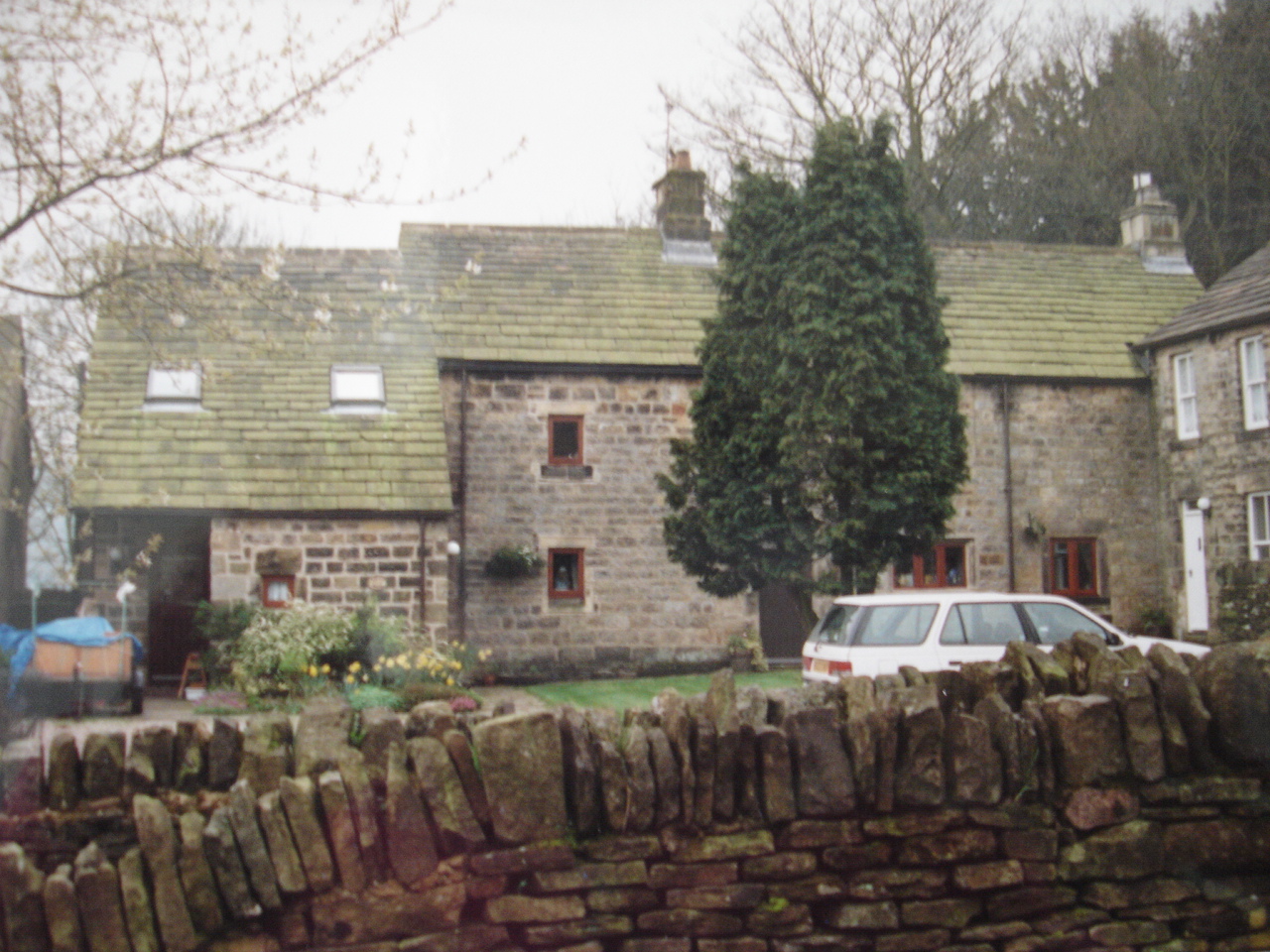 |
| Langsett House Farm (1998) |
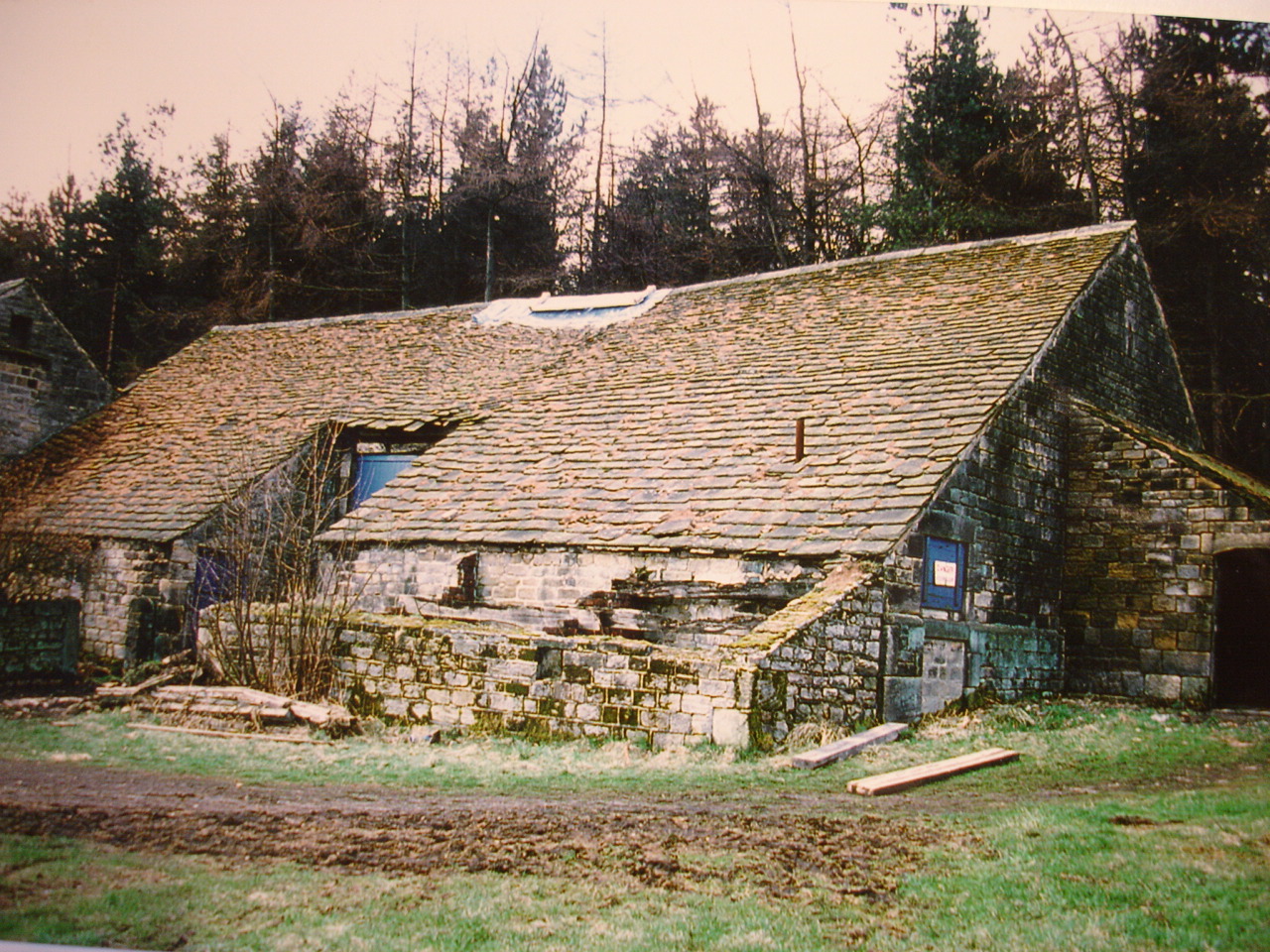 |
| Langsett Barn in 1980s (originally part of Langsett House Farm) before it was restored |
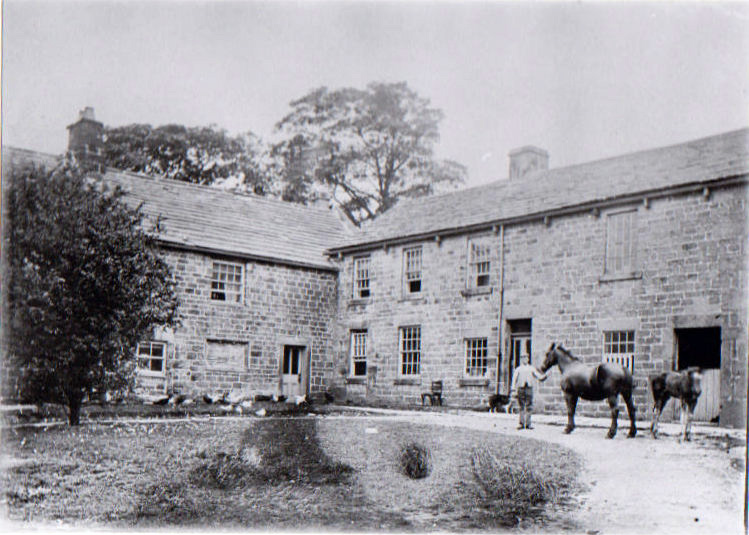 |
| Langsett House Farm as it was in the 19th century |
Stanley Farm - this was on the main road. All that can be seen now are some humps in the field.
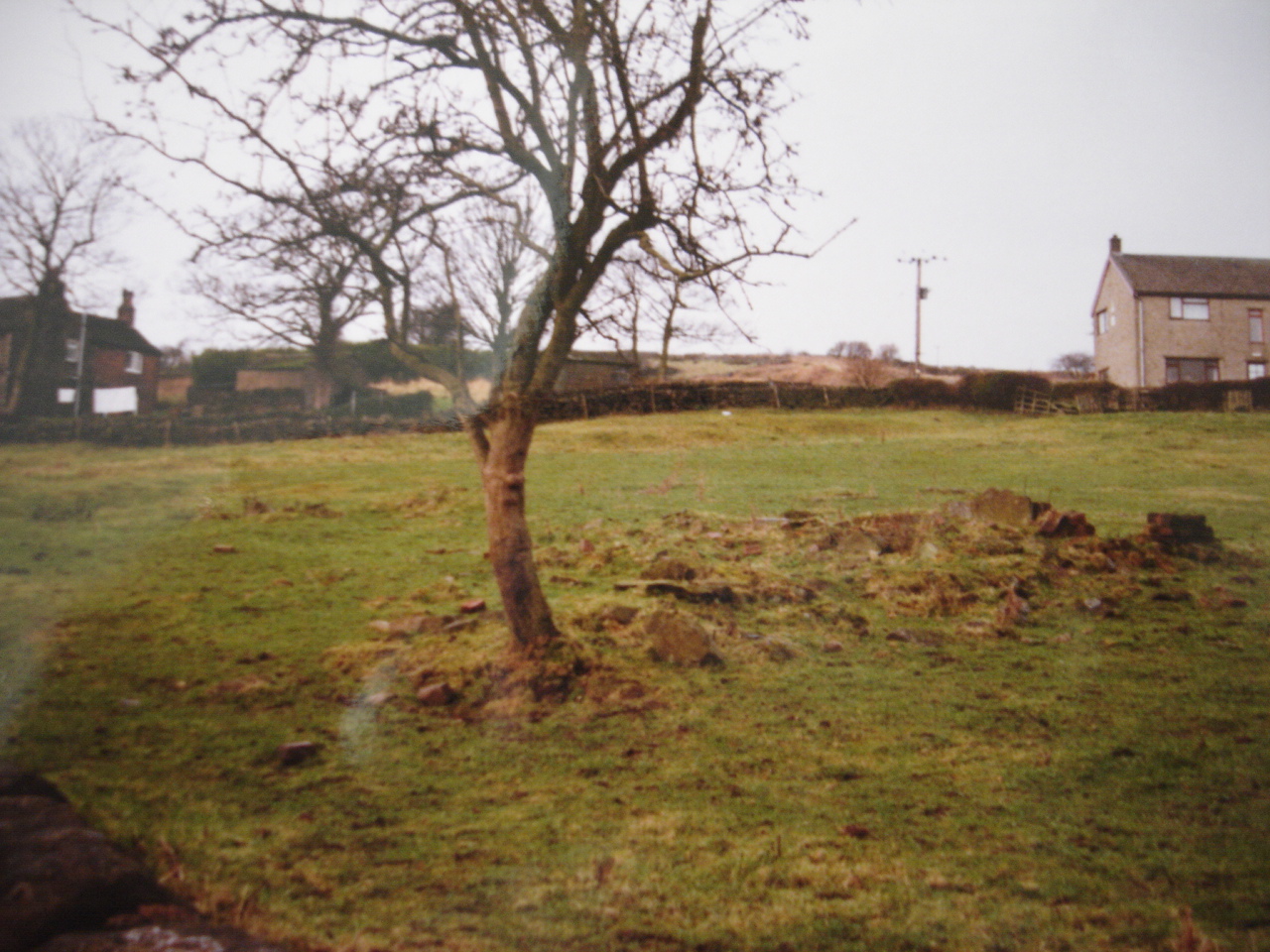 |
| Remains of Stanley Farm |
Back to top
Farm on Langsett Lane - this is now under the reservoir.
Dyke Side Farm - this is now under the reservoir.
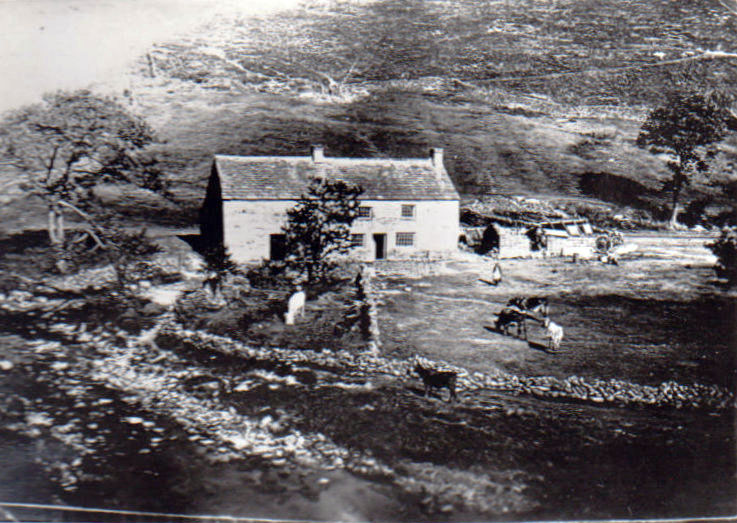 |
| Dyke Side Farm in 19th century – now underneath the reservoir |
Brook House Farm - this stood on the flat land above Brook House Bridge. A small part of what looks like a wall of a building can be seen The last farmer was called Goldthorpe and he left around 1907. The farm fell into disrepair and was demolished.
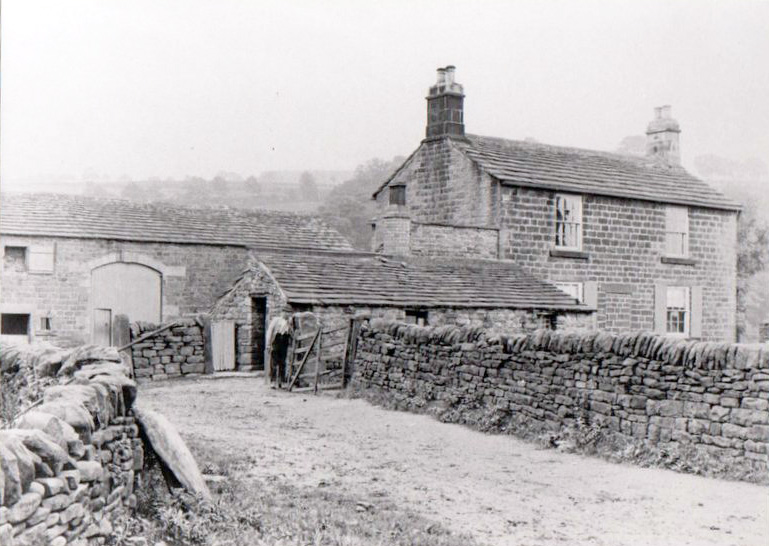 |
| Brook House Farm |
Whiteley Field farm - this stood near the junction of the path from the Flouch and Brook House lane. Again a small piece of what looks like a wall of a building can be seen.
Swindon Grange/Hall —This was a Jacobean building and it had a date stone of 1641.
The farm was demolished.
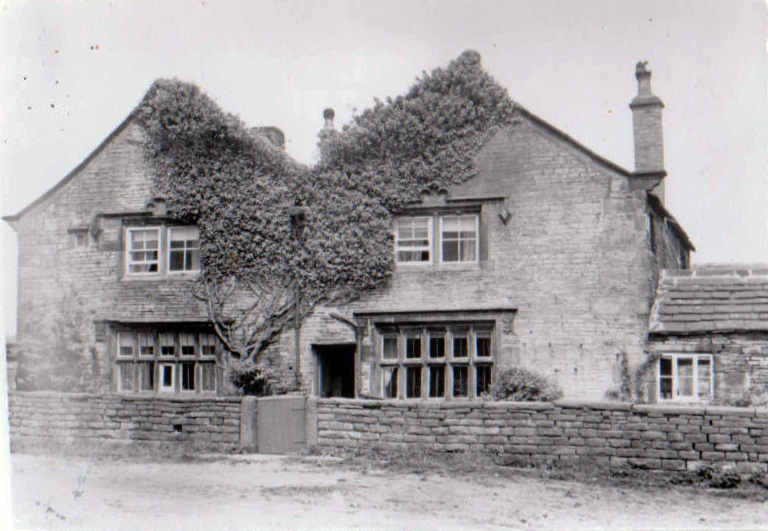 |
| Swindon Hall |
Swindon Farm - this stood near to Swinden Grange. It was demolished but a barn still stands.
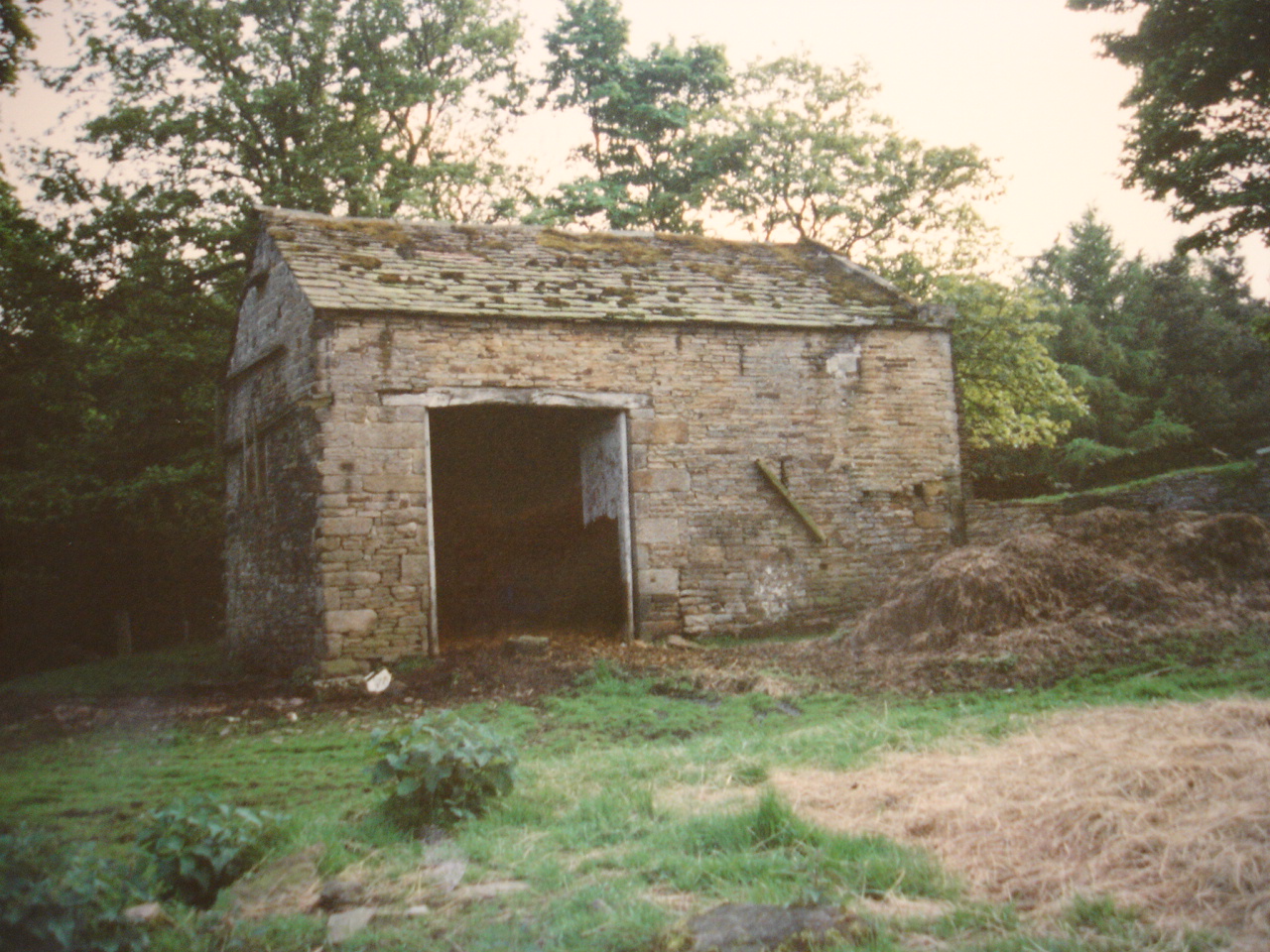 |
| Barn remaining from Swindon Farm |
Back to top
Swinden Walls - this was a farm and roadside inn halfway between Penistone and Woodhead. The farmhouse has gone but a barn remains.
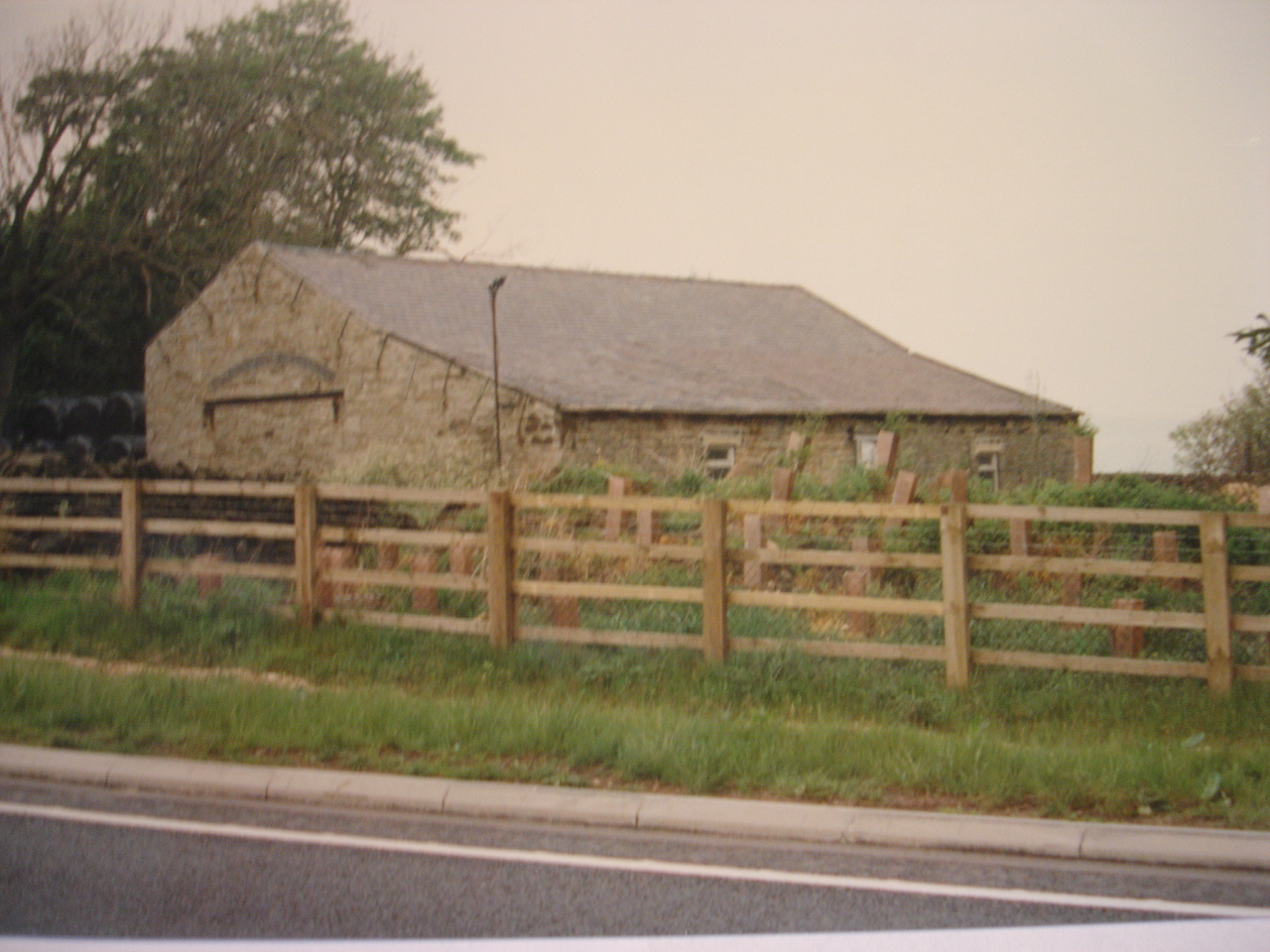 |
| Barn remaining from Swindon Walls Farm |
Far Swinden - little now remains of this farm. The last farmer was T Warhurst who came in 1918 and left in 1934.
Hordron - (sometimes shown as Lower Hordron) was inhabited into the 1930's. Until recently its roof still remained and from a distance it looked like a working farm. However the buildings are now roofless and decaying rapidly.
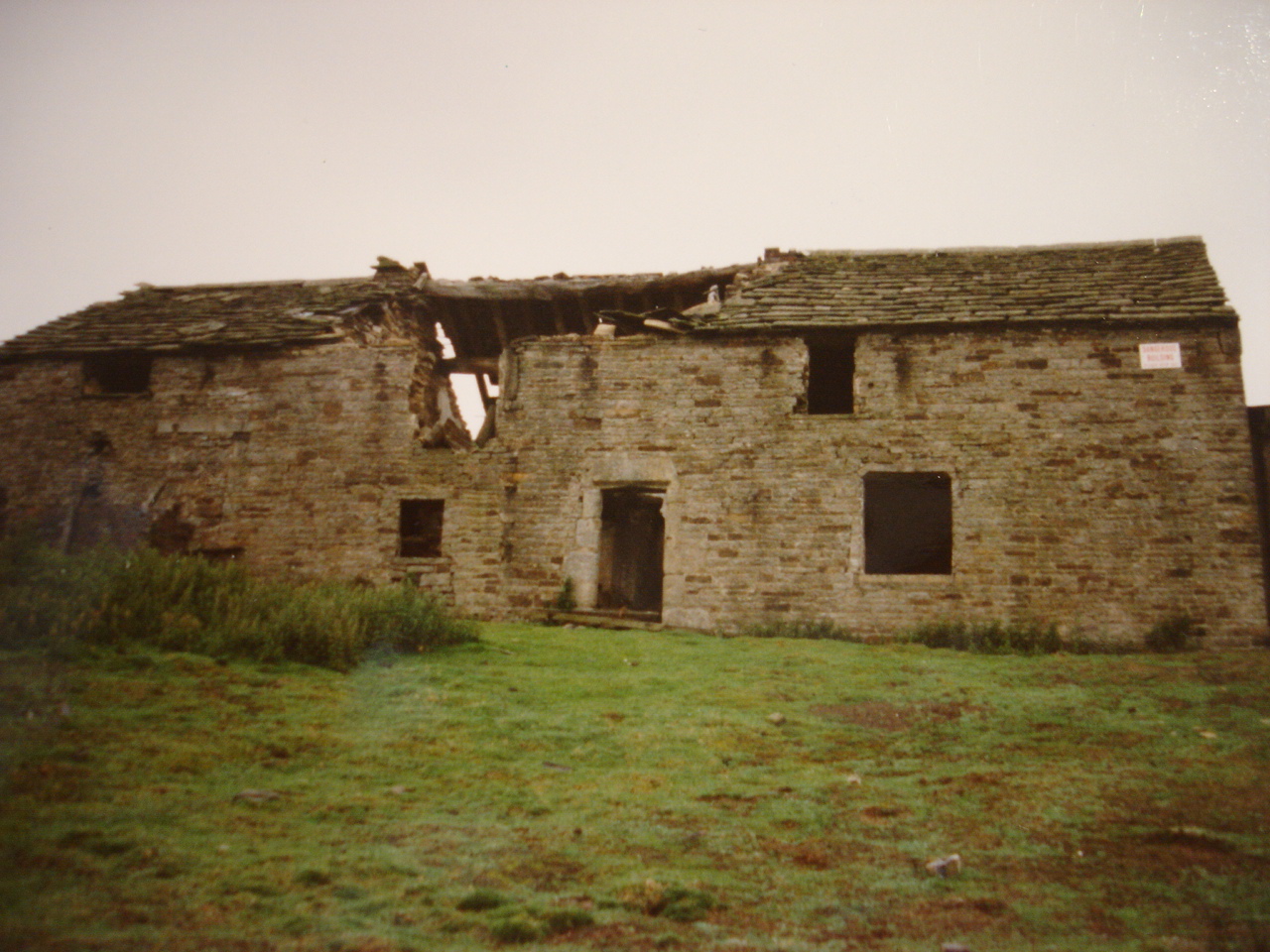 |
| Hordron Farm Building |
Upper Hordron - it is thought that this was probably always just a barn and summer accommodation for a shepherd. The buildings are kept in good repair and used in the shooting season.
North America Farm – At the top of Langsett Moors, this is gradually disappearing.
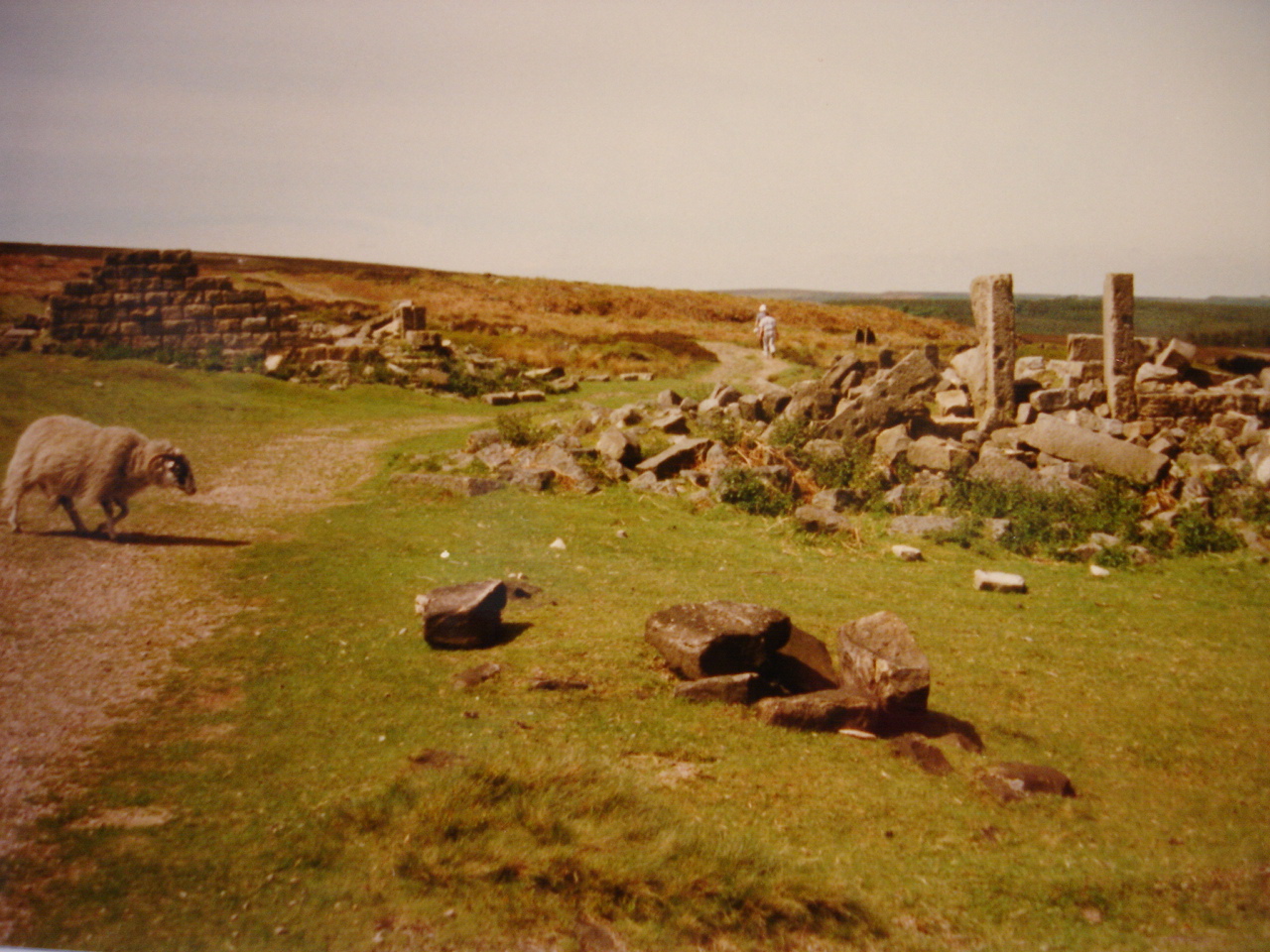 |
| Remains of North America Farm |
Lady Cross Farm – at the extreme northern end of Langsett. It became derelict when the Woodhead Reservoir was built.
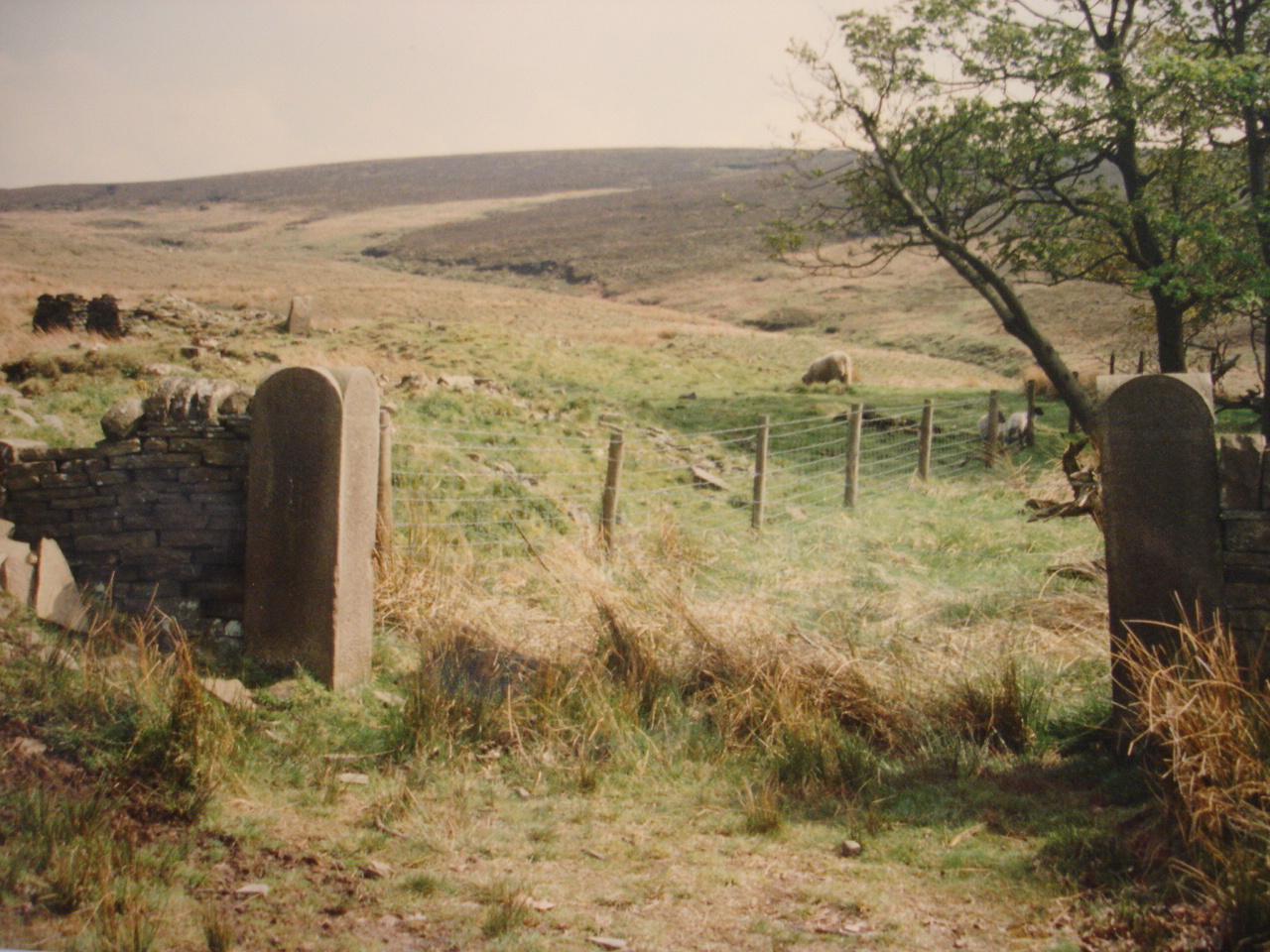 |
| Remains of Lady Cross Farm |
Back to top
Inns Old and New
Inns were built alongside the main routes through an area and also developed in the main centre of population. The Langsett area was no exception. The early inns were places that the packhorses would have been rested and later the inns were used as stops on coaching routes.
Old Saltersbrook Inn was on the Saltway packhorse route and then the original turnpike road to Sheffield. Some ruins can still be seen. The Shepherds Society was formed here in 1807.
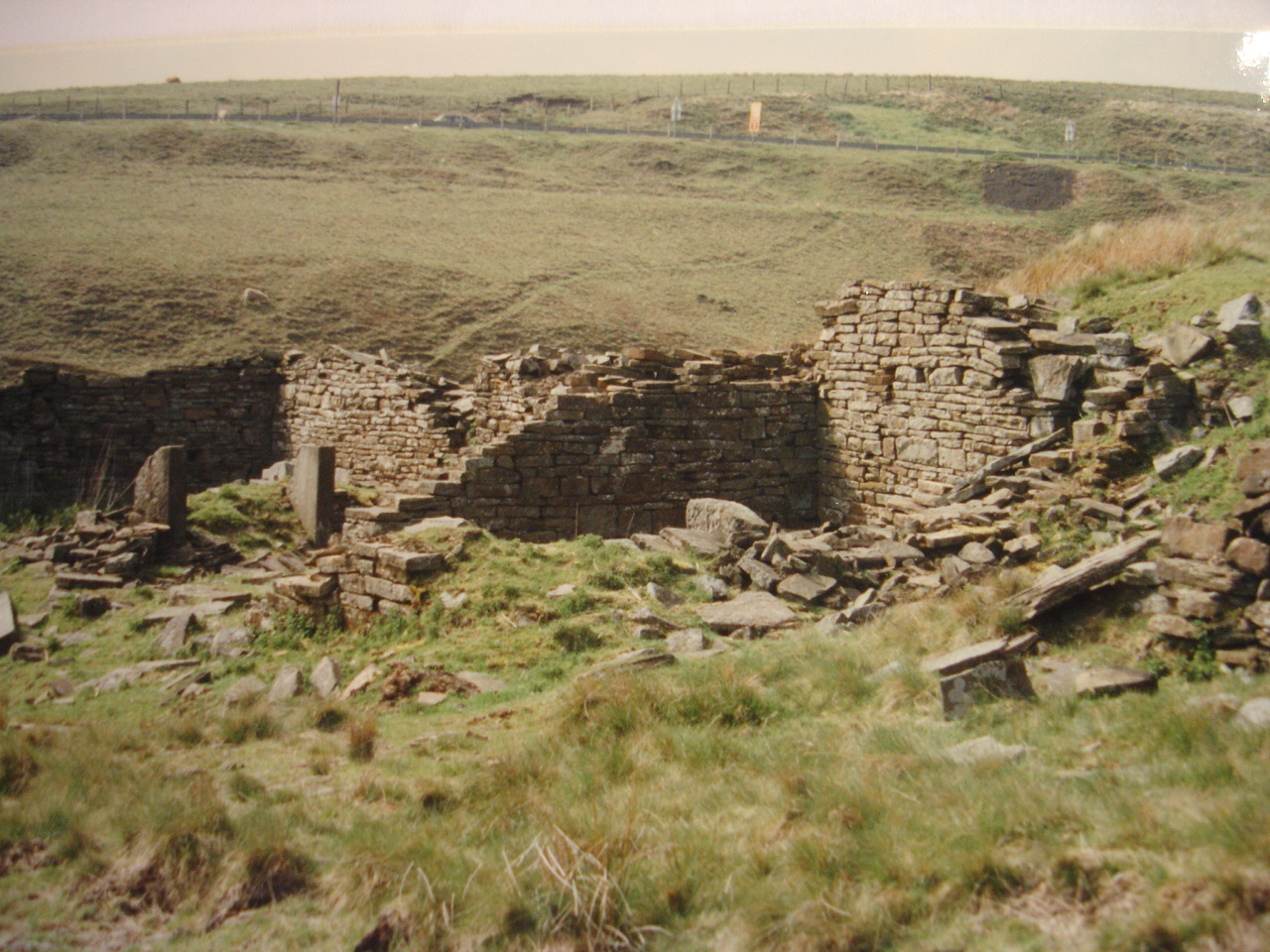 |
| Saltersbrook Inn Remains |
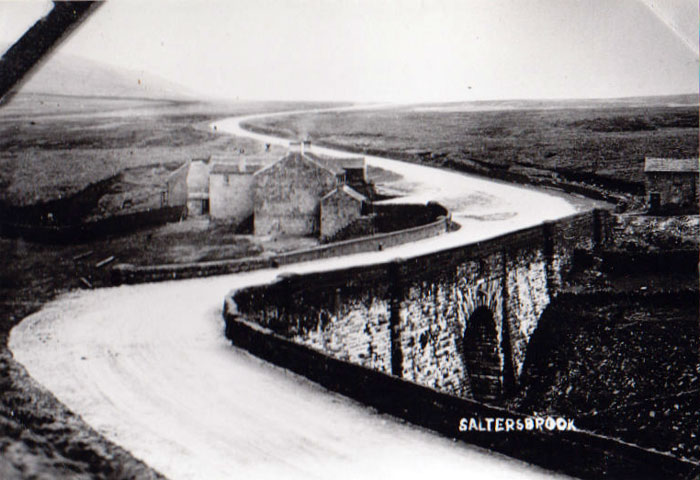 |
| Saltersbrook on the Saltersbrook Turnpike (now the A628) |
Miller's Arms, this replaced the Saltersbrook lnn. The Shepherd's Society met here until the Inn closed after the City of Manchester Corporation Waterworks bought the Inn. It was demolished in 1920.
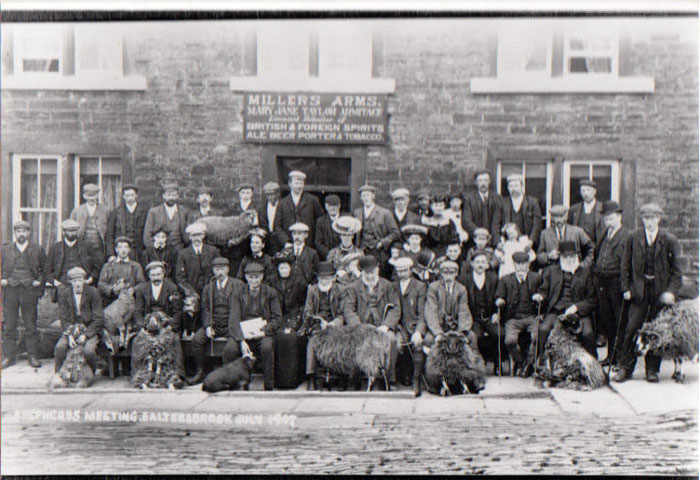 |
| Shepherd's Meet at Saltersbrook |
The Plough and Harrow or
Fiddler's Green was built around 1822 and closed in 1851. It was apparently called Fiddler's Green because someone called Green played the violin there.
The Dog and Partridge dates back to Elizabethan time and still exists today (See
local businesses). The packmen on the Saltway would have been pleased to see it on their journey across the moors. Horses were changed here when horse drawn coaches were the main forms of transport.
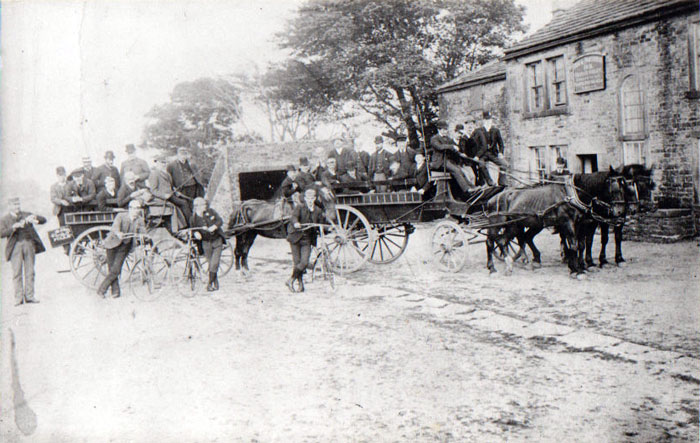 |
| A Day's Outing - The Dog & Partridge |
Back to top
The Old Flouch or New Inn was built by a Mr Heward between 1820 and 1827.
The Inn is now a private house. The inn appears to have been built to serve the traffic on the new turnpike to Huddersfield. It replaced Swindon Walls Farm as an Inn.
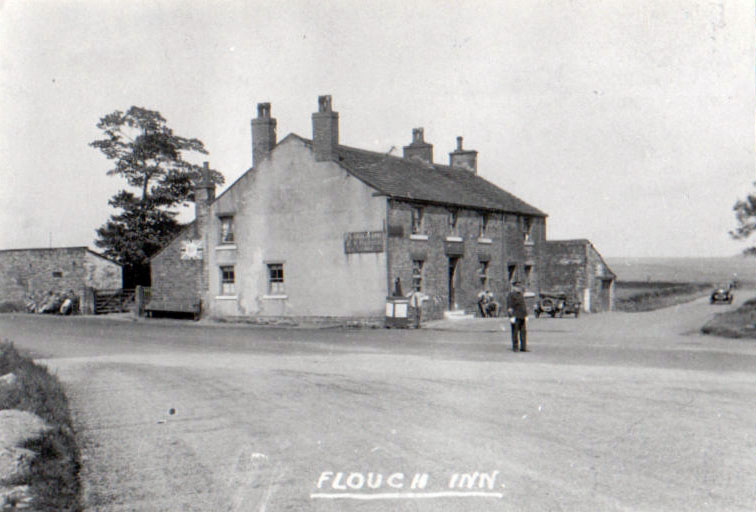 |
| Flouch Inn with Policeman 1920s |
Flouch Inn was built in the 1920's for the new motor car trade across the road from the original Flouch Inn. It is now in the process of being demolished for housing. It was a Balti House until recently, but has previously been Italian and Chinese Restaurants and was a Hotel for quite a while.
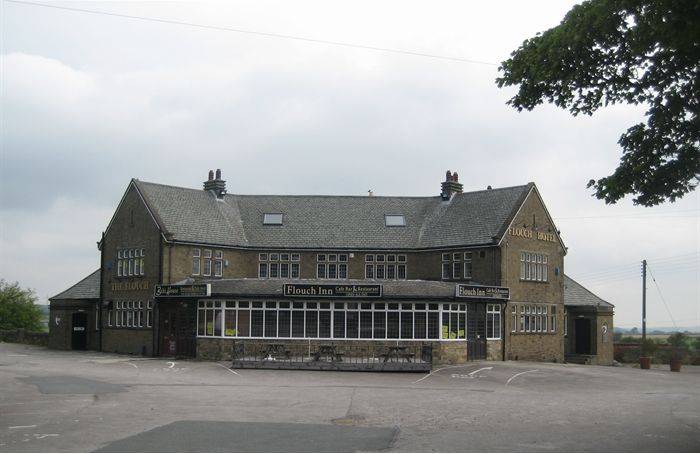 |
| Flouch Inn 1990s |
Waggon & Horses William Payne built this Inn around 1810. It apparently replaced another inn that was demolished to make way for the new turnpike road. This pub still exists today (see
local businesses).
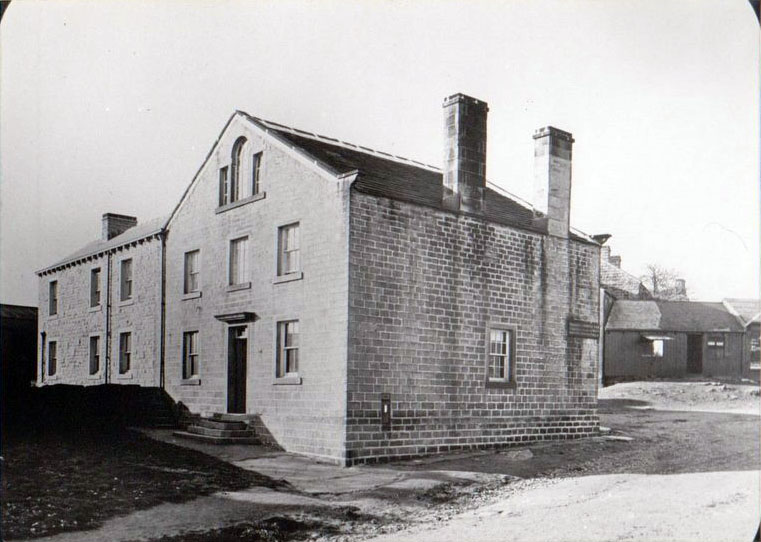 |
| Waggon and Horses |
Back to top